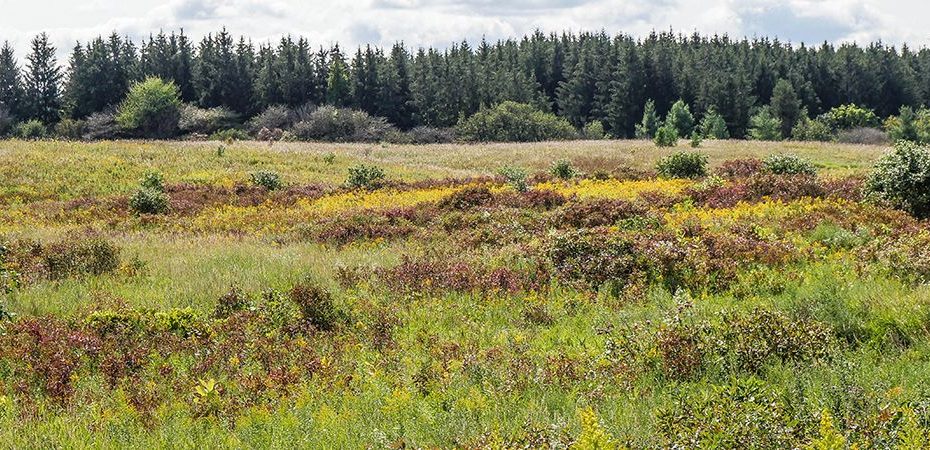Ever wondered how a city known for its industrial prowess can also be a shining example of environmental stewardship? Welcome to Hamilton, a city that defies expectations by blending its industrial heritage with a deep-rooted commitment to preserving the farmland and natural areas that surrounds it.
Hamilton has been making a splash in the news lately, and for all the right reasons. It stood up against changes to the Greenbelt, urban boundaries and the Ontario Wetland Evaluation System. The city is also investing in new climate change incentives and finalizing a Biodiversity Action Plan (BAP), the latter in partnership with the Hamilton Naturalists’ Club (HNC).
Mount Albion Conservation Area, Hamilton © Michael Hunter CC BY 2.0
These are a few of the reasons why Hamilton is a perfect partner for the Municipal Protected Areas Project (MPAP). This national collaborative project aims to build momentum around the critical role that local jurisdictions play in advancing biodiversity conservation by facilitating municipal contributions to Canada’s 30 by 30 protected areas target. The MPAP features pilot projects across Canada to demonstrate the meaningful impact that local conservation efforts have on the bigger picture.
“Hamilton can be a leader in the movement to protect and restore biodiversity. Joining the MPAP will truly amplify Hamilton’s environmental endeavors, making a positive impact on our city’s sustainability and reinforcing our commitment to preserving nature,” says Councillor Alex Wilson, Ward 13. “This collaboration will strengthen our efforts and encourage bold action to safeguard and enhance our precious natural areas, ensuring a thriving environment for generations to come.”
Our Species Spaces, Hamilton © Daynan Lepore
Aligning with these efforts, Hamilton has already endorsed the Montreal Pledge, a commitment to protecting biodiversity that is achieved through 15 tangible actions. Inspired by the Global Biodiversity Framework adopted at COP15, the themes within the pledge are synergistic with the objectives of the BAP.
“HNC is thrilled to be working with the city in developing and implementing the BAP in alignment with the Montreal Pledge,” says Jen Baker, HNC’s Land Trust Manager and chair of the BAP working group. “It helps set us up to take meaningful local actions that contribute to national and international biodiversity targets.”
Dundas Peak © Kevin Cabral CC BY 2.0
The City of Hamilton and Ontario Nature are planning to work together to assess Hamilton’s natural areas for contribution towards the 30 by 30 target (joining other local landowners recognized for protecting near-urban nature). As part of the MPAP pilot project they will also be seeking opportunities to strengthen environmental plans and policies, meaningfully engage with Indigenous communities to advance Indigenous-led conservation and the implementation of Hamilton’s Urban Indigenous Strategy, and promote initiatives and collaborations demonstrating Hamilton’s environmental leadership.
If you have any questions about the Hamilton pilot or MPAP more generally, please e-mail jennak@ontarionature.org.
Resources
The post Hamilton: A Key Partner in the Municipal Protected Areas Project appeared first on Ontario Nature.
